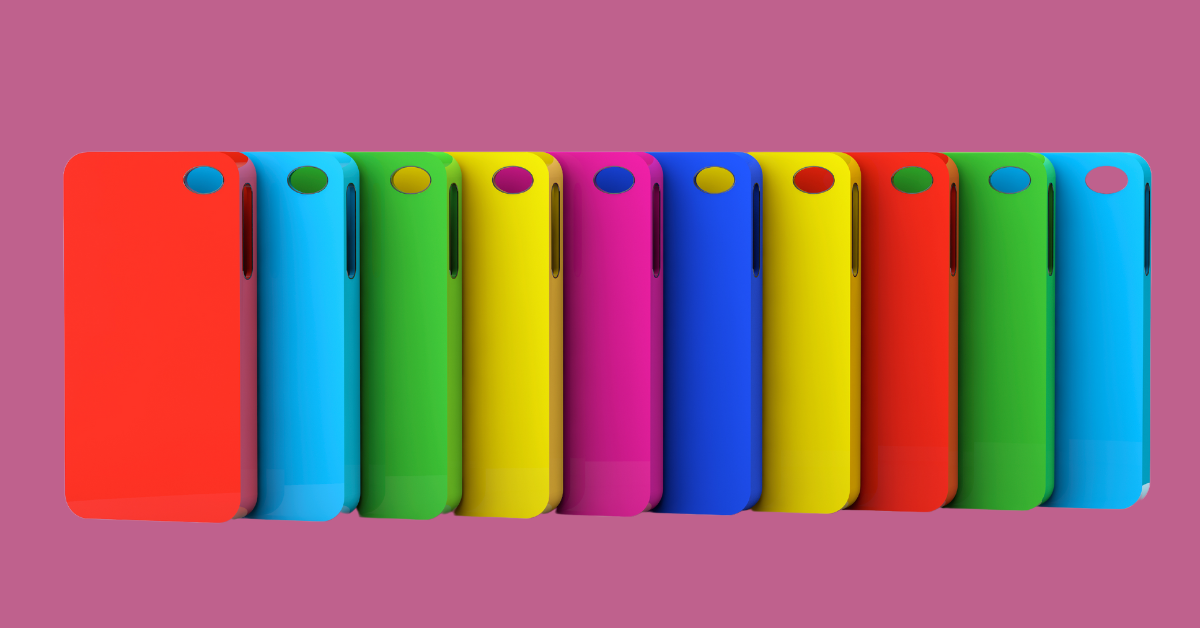What are Brand Guidelines?
Brand guidelines, also known as style guides, are the foundation of a cohesive brand identity. They provide a framework for maintaining consistency and coherence across all aspects of your brand, from your logo and color scheme to your tone of voice and imagery.
A style guide is a document that outlines the rules and guidelines for how your brand should be presented across all channels. This includes everything from typography and color palettes to the tone of voice you use in your copy. By establishing these guidelines, you can ensure that your brand remains consistent and recognizable, no matter where it appears.
Think of it as the musical score for your brand’s orchestra. Each element, from logo usage to messaging tone, plays its part in the grand symphony that is your brand identity. With clear guidelines, every note resonates with the same power and purpose, captivating your audience and leaving a lasting impression.
In this article, we will explore how to create a style guide for your business that will help you establish a strong brand identity and improve your marketing efforts. To start, it’s important to understand what a style guide is and why it’s important.
Why are Brand Guidelines Important?
In today’s digital age, brands have more touchpoints with their audience than ever before. From websites and social media to packaging and advertising, maintaining consistency across all these channels is crucial. Brand guidelines serve as the north star, guiding every interaction to reflect your brand’s core values and personality.
Benefits of Brand Guidelines:
- Enhanced brand recognition: Consistent brand presentation across all platforms strengthens recognition and recall, making your brand more memorable in the eyes of your audience.
- Improved brand communication: Clear guidelines ensure everyone speaks the same brand language, delivering a unified message that resonates with your target audience.
- Increased efficiency: Having a readily available reference point saves time and resources by eliminating guesswork and inconsistencies in brand application.
- Empowered team members: Brand guidelines equip your team with the knowledge and confidence to make informed decisions about brand representation, fostering a sense of ownership and brand ambassadorship.
Elements of a Brand Style Guide
A brand style guide typically includes the following elements:
1. Brand story and messaging: This section outlines the brand’s mission, vision, and values, as well as the tone and voice that should be used in all communications.
2. Logo usage: This section provides guidelines for how the logo should be used, including size, placement, and clear space.
3. Color palette: This section includes the brand’s primary and secondary colors, as well as information on how to use them in different contexts.
4. Typography: This section outlines the fonts that should be used in all communications, including headings, body text, and other design elements.
5. Imagery and photography: This section provides guidelines for the types of images that should be used in brand communications, as well as any specific requirements for photography.
6. Brand applications: This section includes examples of how the brand should be applied across different channels, such as social media, advertising, and packaging.
7. Brand assets: This section provides access to all of the brand’s assets, including logos, images, and templates.
How to create a brand style guide
Creating a brand style guide is an important step in establishing a consistent and recognizable brand identity. Here are some steps you can follow to create a brand style guide:
1. Define your brand: Start by defining your brand’s mission, values, and personality. This will help you create a brand that is authentic and consistent across all platforms.
2. Identify your target audience: Understanding your target audience is crucial to creating a brand that resonates with them. Identify their demographics, interests, and pain points.
3. Choose your brand colors: Choose a color palette that represents your brand and use it consistently across all platforms.
4. Create your logo: Your logo is the visual representation of your brand. Create a logo that is simple, memorable, and reflects your brand’s values.
5. Choose your typography: Choose a typography that complements your logo and is easy to read.
6. Define your brand voice: Your brand voice is the tone and language you use to communicate with your audience. Define your brand voice and use it consistently across all platforms.
7. Create brand guidelines: Compile all of the above elements into a comprehensive brand style guide. This guide should include guidelines for logo usage, color palette, typography, and brand voice.
Creating a brand style guide takes time and effort, but it is a worthwhile investment in building a strong and recognizable brand identity.
7 best-in-class brand guidelines examples
1. Apple Brand Guidelines: Apple’s brand guidelines are a great example of how to create a cohesive brand identity across a range of products and services.

2. Coca-Cola Brand Guidelines: Coca-Cola’s brand guidelines are known for their iconic use of red and white, and their consistent messaging across all channels.

3. Nike Brand Guidelines: Nike’s brand guidelines are focused on the brand’s core values of athleticism, innovation, and inspiration, and how these values translate into the products and experiences offered.

4. Airbnb Brand Guidelines: Airbnb’s brand guidelines emphasize the importance of community, diversity, and inclusion, and offer guidance on how to create a welcoming and inclusive environment for all guests.
5. Google Brand Guidelines: Google’s brand guidelines focus on the company’s commitment to innovation, simplicity, and user experience, and offer detailed guidance on how to create products and services that align with these values.

6. FedEx Brand Guidelines: FedEx’s brand guidelines are focused on consistency and reliability, and offer guidance on how to create a seamless and efficient customer experience across all touchpoints.
7. Slack Brand Guidelines: Slack’s brand guidelines are focused on the company’s commitment to simplicity, clarity, and ease of use, and offer guidance on how to create a user-friendly and intuitive experience for all users.
3 tips for creating brand guidelines that work
Focus on Clarity & Actionability:
- Keep your guidelines concise and easy to understand, avoiding jargon and technical terms.
- Prioritize actionable instructions with clear examples and visuals.
- Think of it as a user manual for your brand, not a dusty textbook.
Embrace Collaboration & Iteration:
- Involve key stakeholders across departments in the creation and review process.
- Get feedback from your target audience to ensure the guidelines resonate with them.
- Treat your guidelines as a living document, open to updates and evolution as your brand grows.
Balance Consistency & Flexibility:
- Define the core elements of your brand identity to ensure consistent application across channels.
- However, don’t stifle creativity! Leave room for adaptation and interpretation within established boundaries.
- Aim for a balance that maintains brand recognition while allowing space for fresh ideas.
Creating and maintaining brand guidelines can be both exciting and daunting. To help you navigate the process, I’ve compiled some of the most frequently asked questions about brand guidelines:
Brand Guidelines FAQ:
1. What are brand guidelines?
Brand guidelines, also known as style guides, are essentially the rulebook for your brand. They define your visual identity (logo, colors, fonts, etc.) and your brand voice (tone, messaging, personality). Think of them as a roadmap that ensures everyone involved with your brand communicates it consistently and effectively.
2. Why are brand guidelines important?
Consistent brand presentation builds trust and recognition, making your brand more memorable. Brand guidelines:
- Enhance recognition: A unified brand across platforms strengthens recall and makes your brand stand out.
- Improve communication: Clear guidelines ensure everyone speaks the same brand language, delivering a consistent message.
- Increase efficiency: Having a reference point saves time and resources by eliminating guesswork and inconsistencies.
- Empower teams: Guidelines equip your team with the knowledge and confidence to make informed brand decisions.
3. What should be included in brand guidelines?
The essential elements include:
- Brand foundation: Mission, values, target audience
- Visual identity: Logo usage, color palette, typography, imagery
- Brand voice: Language, tone, messaging pillars
- Additional considerations: Marketing, social media, internal branding, brand assets
4. How do I create brand guidelines?
Here’s a step-by-step process:
- Gather essentials: Define your brand foundation and compile existing assets.
- Develop visual identity: Refine logo usage, colors, fonts, and imagery style.
- Craft brand voice: Define language, tone, and key messages.
- Refine & organize: Gather feedback, design the guide, and choose a format (digital/physical).
- Launch & maintain: Share, train, version control, and regularly review.
5. How often should I update my brand guidelines?
Your brand evolves, so your guidelines should too. Regularly review and update them to reflect changes and ensure continued effectiveness. Aim for annual or biannual reviews.
6. Where can I find good examples of brand guidelines?
Several brands have fantastic guidelines, like Mailchimp (clear writing, playful personality), Slack (visual appeal, comprehensive), and Airbnb (strong voice, emotional connection).
7. Can I create brand guidelines myself, or should I hire a professional?
While DIY is possible, professional help can be invaluable. They bring expertise, fresh perspectives, and design skills to create impactful and comprehensive guidelines.
Remember, your brand guidelines are a powerful tool. Invest time and effort in creating them, and leverage them to build a strong and consistent brand identity that resonates with your audience.




